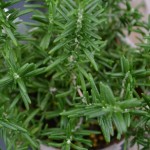Your Guide to Growing and Caring for Rosemary
Known for its versatility and wide range of uses, rosemary has become a staple in kitchens everywhere. From culinary applications to health benefits, this low-maintenance plant is a valuable addition to any garden, whether you’re a novice or an experienced gardener.
Depending on the variety, rosemary can exhibit different growth habits, from creeping to mounding to upright forms. It can grow up to four feet tall and spread four to five feet wide when planted in the ground, but will stay small when pruned and planted in small pots. The rosemary plant produces small, understated blooms in shades of blue, pink or white.
Naturally drought-tolerant, rosemary requires minimal maintenance. If shaped into topiary form, it will need only occasional pruning. As an evergreen plant, it can grow into a shrub over time, making it a must-have for any garden!
When to Plant
It’s best to plant rosemary after the last frost in the spring. Wait until the weather and the soil have warmed up. Rosemary plants grown in containers can be planted indoors at any time of the year, but it does become dormant in the winter.
Where to Plant
Rosemary will thrive when planted in well-draining soil and a sunny area that gets at least 6 hours of direct sunlight every day. Good companion plants include beans, carrots, spinach and cruciferous vegetables (i.e. Brussels sprouts, broccoli, cauliflower, cabbage and kale), beans, carrots and spinach.
How to Plant
Rosemary shrubs should be planted 2 to 3 feet apart from each other to allow space for them to spread out. Plant seedlings and nursery plants at the same depth as in their previous container. Seeds should be just barely covered with soil.







